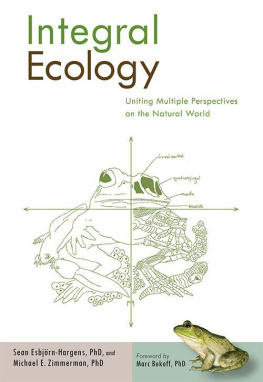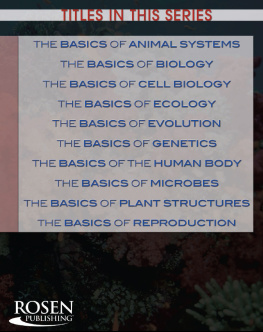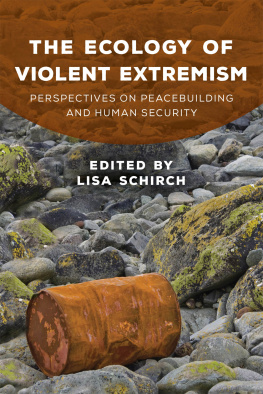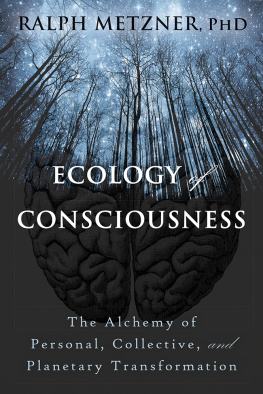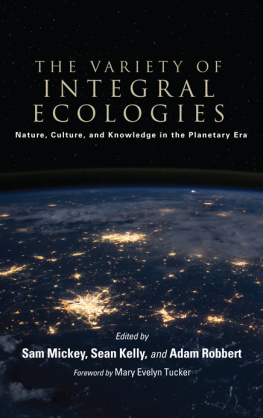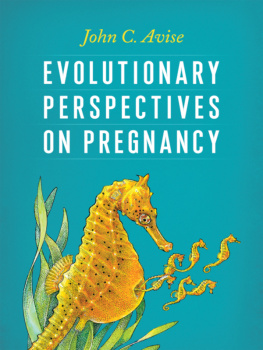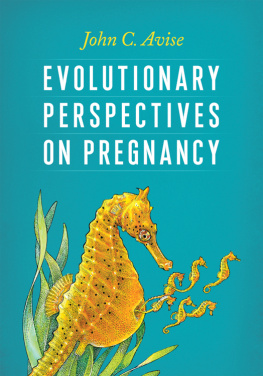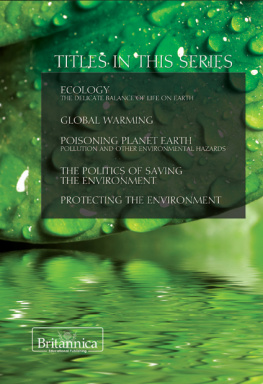

INTEGRAL BOOKS
An imprint of Shambhala Publications, Inc.
Horticultural Hall
300 Massachusetts Avenue
Boston, Massachusetts 02115
www.shambhala.com
Frontispiece by Michael Garfield
2009 by Sean Esbjrn-Hargens and Michael E. Zimmerman
Case Study I 2005, 2009 Gail Hochachka
Case Study II 2005 Brian N. Tissot
Case Study III 2005 Darcy Riddell
See for further copyright information.
All rights reserved. No part of this book may be reproduced in any form or by any means, electronic or mechanical, including photocopying, recording, or by any information storage and retrieval system, without permission in writing from the publisher.
Library of Congress Cataloging-in-Publication Data
Esbjrn-Hargens, Sean.
Integral ecology: uniting multiple perspectives on the natural world / Sean Esbjrn-Hargens, and Michael E. Zimmerman; with case studies by Gail Hochachka, Brian Tissot, and Darcy Riddell; foreword by Marc Bekoff.1st ed.
p. cm.
Includes bibliographical references and index.
978-1-59030-466-2 (hardcover: alk. paper)
978-1-59030-767-0 (pbk)
978-0-8348-2446-1 (eISBN)
1. Human ecologyPhilosophy. 2. Nature. 3. Human beings.
I. Zimmerman, Michael E., 1946 II. Title.
GF21.E75 2009
304.201dc22
2008032370
To Tatiana Rose, the queen of all those unseen at Sea Frog Haven
SEAN ESBJRN-HARGENS
To my wife, Teresa, and my daughter, Lizzie
MICHAEL E. ZIMMERMAN
We do not easily know nature, or even know ourselves. Whatever it actually is, it will not fulfill our conceptions or assumptions. It will dodge our expectations and theoretical models. There is no single or set nature either as the natural world or the nature of things. The greatest respect we can pay to nature is not to trap it, but to acknowledge that it eludes us and that our own nature is also fluid, open, and conditional.
Hakuin Zenji put it self-nature that is no nature /... far beyond mere doctrine. An open space to move in, with the whole body, the whole mind.
GARY SNYDER,
No Nature: New and Selected Poems
CONTENTS
C ASE S TUDY I : I NTEGRATING I NTERIORITY IN S USTAINABLE C OMMUNITY D EVELOPMENT
C ASE S TUDY II : I NTEGRAL M ARINE E COLOGY
C ASE S TUDY III : E VOLVING A PPROACHES TO C ONSERVATION
SEAN ESBJRN-HARGENS
In hindsight, it now seems inevitable that our paths would not only cross but that we could become companions in and explorers of Integral Ecology. As Michael published Contesting Earths Future (1994), the first environmental philosophy text to draw heavily on Ken Wilbers analysis, I was heading to Africa, where I would encounter Wilbers writings. Separately, and at the same time, we were developing much of what is presented in this book. Thus, for over five years both of us were independently connecting Wilbers integral analysis to ecological issues and environmental thought. As a result of our efforts we had both become friends with Ken Wilber. Wilber brought us together and introduced us in the summer of 2000 by inviting us (along with several others applying Integral Theory to ecology) to Boulder, Colorado, for the first Integral Ecology Center meeting, hosted by the recently formed Integral Institute.
Over the next several years, Michael and I stayed in touch and compared notes as we both taught academic courses in Integral Ecology and wrote articles connecting the Integral Model to ecological issues.
It is our hope that this book supports a new kind of ecology, one that is informed by the strengths of many approaches and methods, while at the same time exposing the limits and blindspots of various perspectives. May this book serve a flourishing of mutual understanding between differing perspectives.
As with any long-term project with a scope as large as this one, there are many to thank and acknowledge. To begin with, we want to recognize Ken Wilber for his brilliant mind and open heart, his friendship, and his guidance in manifesting this book through countless hours of review and conversation. Annie McQuade has done the heavy lifting, placing our word clay into the editorial fire and creating a durable text with a nice glaze. We are deeply indebted to her intellectual labor, sense of humor, and much-needed encouragement all the while being patient and persistent with our big life transitions (I became a father, and Michael moved his family across the country). We were blessed to have a strong seasoned team at Shambhala with Kendra Crossen, Liz Shaw, Chloe Foster, Lora Zorian, and Hazel and Sara Bercholz sharing legs in our publishing triathlon and ultimately carrying the project across the finish line. Matt Wrench Rentschler had the laborious job of tending to endnote editing details that would drive most people to drink. Not only did he do a superb job on this task, but he also provided some important content research for chapter 9. Jon Geselle provided his embodied presence and sharp mind while reading the entire manuscript and made many important suggestions that greatly improved the text. For many years Jon has been a sounding board for many of the ideas presented here and has consistently helped refine the theory and praxis of Integral Ecology. Throughout the project Stan Salthe provided valuable conversation and feedback on the content of the manuscript. Marc Bekoffs support and generous foreword are greatly valued. Brad Reynolds did a wonderful job providing all the tables and figures, of which there are many. His skill and aesthetic sense has greatly enhanced the book. Likewise, Michael Garfields work on the 4-quadrant frog frontispiece and cover art is superb. If only all authors could have such skill and vision tending to their book covers. Clint Fuhs supported us in unpacking Integral Calculuslighting up the path where few have gone. Nick Hedlund and Carrissa Wieler did important research locating key quotes and texts for chapter 9. Yotam Schacter did a meticulous job of scanning the case studies in part four. Gail Hochachka, Brian N. Tissot, and Darcy Riddell have provided valuable illustrative case studies of Integral Ecology in action for part four. These case studies do the important work of connecting our theoretical musings with the concrete details of application. Similarly, we are appreciative of all those who have provided us with examples of Integral Theory applied to ecological and environmental issues: Cameron Owens, Wade Prpich, Kevin Feinstein, Brad Arkell, Brian Eddy, Barrett Brown, Cynthia McEwen, Will Varey, Mark DeKay, Ian Wight, Chris Reidy, Gail Hochachka, Tim Winton, Nick Wilding, Marilyn Hamilton, Kevin Snorf, Joel Kreisberg, John Dupuy, Chris and Ilsa Preist, David Johnston, and Stephan Martineau. Integral practitioners Ingrid Bamberg and Dan Wheeler have provided much support and camaraderie in various forms.
In addition, I want to acknowledge that a profound debt is owed the wild places, in particular the rocky shores of the Pacific Northwest and the redwoods of Northern California (especially those at Sea Frog Haven, which held me in the final stages of this process connecting me to what in many respects is all that matters!).
An equal recipient of my appreciation is Michael Zimmerman. Michael has not only served as mentor, colleague, and friend, but he has also been a fellow explorer seeking more Integral frameworks and articulations of our relationship with the natural world. I consider it a rare opportunity to be able to work so closely with someone as philosophically astute and open-hearted as Michael. It has been a total joy to collaborate on this project with him.
Next page
